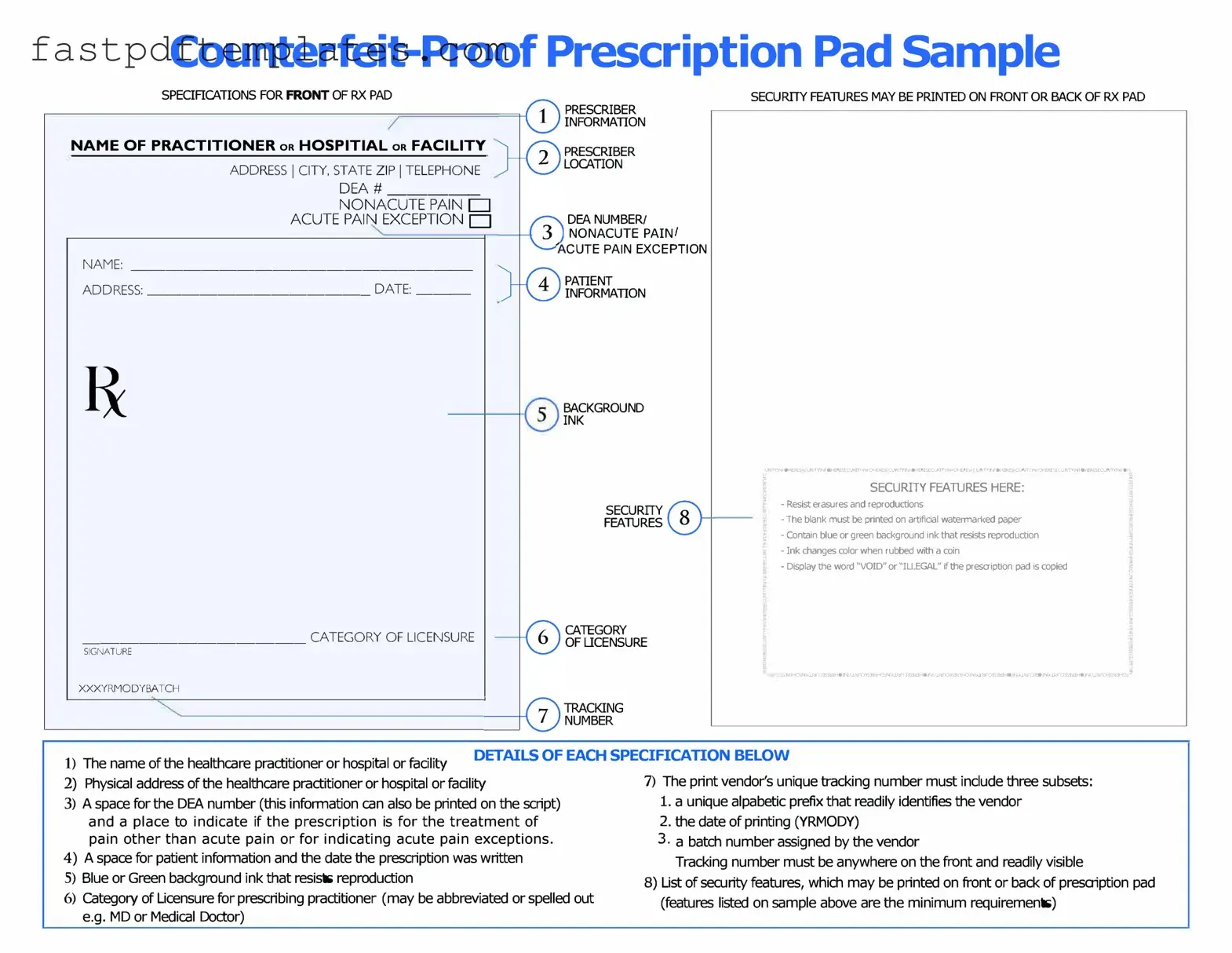The Prescription Pad form is similar to the Medication Administration Record (MAR). Both documents serve as official records for medications prescribed to patients. The MAR is used primarily in healthcare settings to track the administration of medications, ensuring that patients receive the correct dosages at the right times. Like the Prescription Pad, the MAR includes details such as the patient's name, medication name, dosage, and administration route. This document is crucial for maintaining patient safety and ensuring compliance with treatment plans.
Another document comparable to the Prescription Pad is the Medication List. This list provides a comprehensive overview of all medications a patient is currently taking, including over-the-counter drugs and supplements. Similar to the Prescription Pad, it includes essential information such as the medication name, dosage, and prescribing physician. The Medication List is particularly useful for healthcare providers to avoid potential drug interactions and to ensure continuity of care during transitions between different healthcare settings.
The Drug Utilization Review (DUR) report shares similarities with the Prescription Pad as well. The DUR report analyzes a patient’s medication history to identify potential issues such as drug interactions, duplicate therapies, or inappropriate dosages. While the Prescription Pad focuses on the current prescriptions, the DUR report provides a broader view of a patient’s medication use over time, helping healthcare providers make informed decisions about ongoing treatment.
The Clinical Summary document also resembles the Prescription Pad in its role of summarizing a patient’s health information. This document typically includes a summary of medications, allergies, and recent health assessments. Like the Prescription Pad, it is designed to facilitate communication among healthcare providers and ensure that everyone involved in a patient’s care is aware of their medication regimen and any pertinent health issues.
The Treatment Plan document is another related form. This document outlines the overall strategy for managing a patient’s health condition, including medications, therapies, and lifestyle changes. The Treatment Plan, like the Prescription Pad, includes specific medication instructions, but it also encompasses broader treatment goals and interventions. Both documents are essential for ensuring that patients receive coordinated and effective care.
Similar to the Prescription Pad, the Patient Information Sheet provides vital information regarding a patient’s medications and health status. This sheet often accompanies prescriptions and includes details about potential side effects, interactions, and instructions for use. The Patient Information Sheet aims to empower patients with knowledge about their medications, just as the Prescription Pad serves to communicate essential prescription details to pharmacists and other healthcare providers.
Lastly, the Consent Form bears resemblance to the Prescription Pad in that it documents patient agreement to a specific treatment plan, which may include medication use. The Consent Form outlines the risks and benefits associated with prescribed treatments. While the Prescription Pad specifies what medications are prescribed, the Consent Form ensures that patients understand and agree to the proposed treatment, fostering informed decision-making in their healthcare journey.

